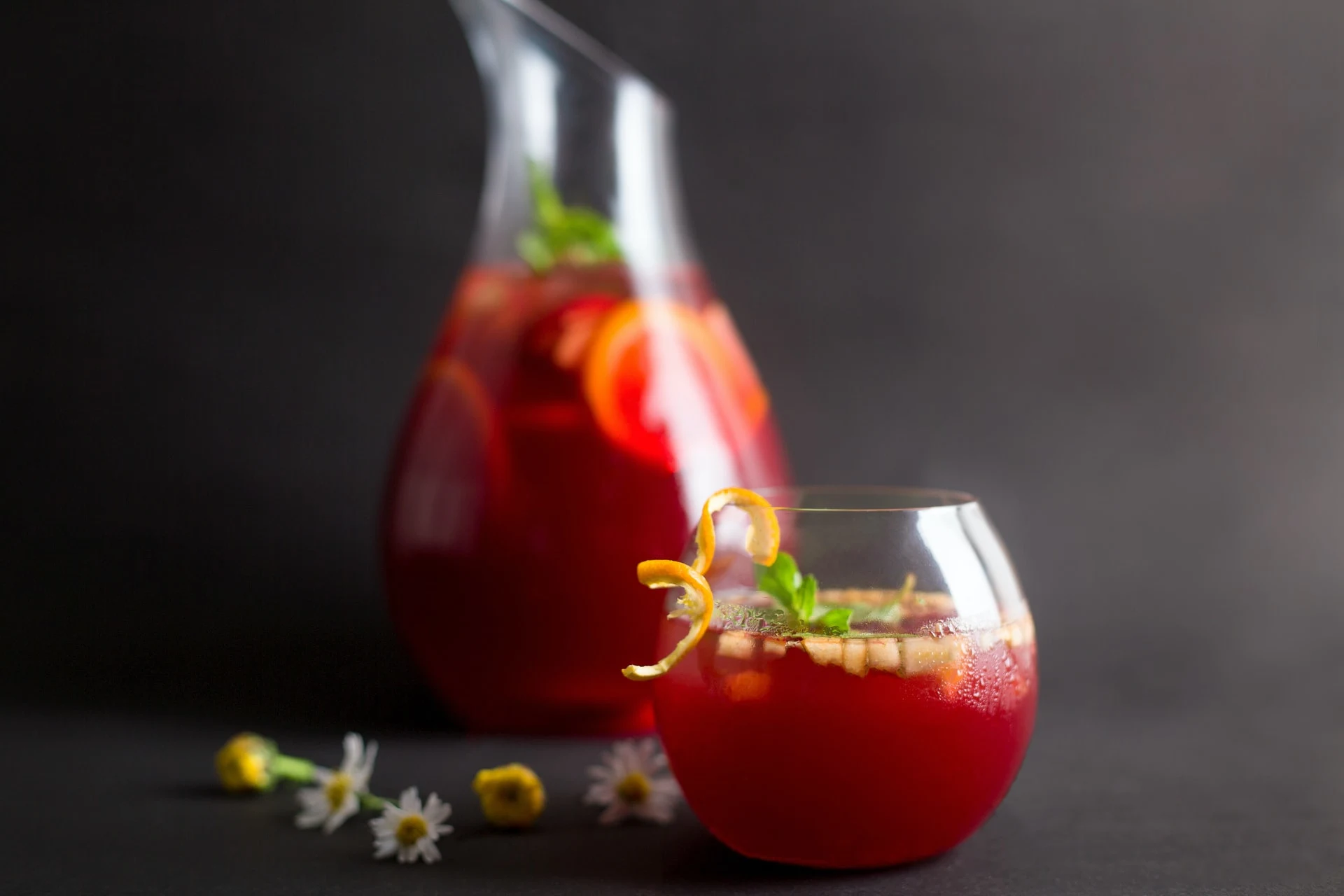If you’ve ever wondered what the best type of wine for sangria is, you’re not alone! While there are many wines that are appropriate for sangria, certain wines will raise a sangria to the next level, and others could ruin a recipe.

Wine is the primary ingredient in sangria, so it’s definitely important to choose wisely and this guide will go over everything you need to know about picking a wine for your next batch of sangria 🙂
What Is Sangria?
Sangria is an alcoholic drink that originated in Spain and Portugal. In Spanish, sangria literally translates to “Blood”, which refers to the primary ingredient used in the drink: red wine.
Traditionally, sangria is made with red wine, chopped fruits, brandy, and a little sugar.
While this is still a popular way of making sangria, nowadays you can really make sangria with ANY type of wine, juice, liqueur, spirit, spice, herb, etc. The sky is truly the limit when it comes to ingredient combinations.
The only rules you have to follow when making sangria are 1. it has to use wine as its base and 2. it should be fruity in taste. Look, it even rhymes!
How To Make Sangria
Making sangria is super straightforward! For most recipes, all you need to do is mix the wine and other ingredients together in a pitcher and then put it in the refrigerator.
I like to serve my sangria immediately, but some people prefer to let it sit for a few hours so the flavors can meld together. Either way, you can store sangria in the fridge for up to 48 hours after it’s made.
The Best Type of Wine To Use In Sangria
Many wines work well in sangria, but the best wines for sangria should be:
- Fruity
- Light to medium bodied
- Unoaked
- Low in tannins (for red wines)
- Super drinkable
Basically, you want something light and fruity that will mix in seamlessly with the other ingredients. So don’t choose a super full-bodied, oaky, or tannic wine, because it will detract from the fruity flavor of the sangria.
Sangria Wine FAQ
Can You Use Sweet Wine in Sangria?
If you like your drinks on the sweeter side, you can definitely use sweet wine in sangria! I personally like my sangria fruity but not overly sweet, so I tend to choose drier wines. But it’s ultimately up to you and your preferences.
How Much Should You Spend on Sangria Wine?
You don’t want to choose a wine that’s expensive or nuanced since you’ll be mixing it with other ingredients. It’s just a waste of your hard earned cash!
For sangria, pick a bottle between $7-$10. You could go even cheaper, but the hangover might not be worth it, so I’d avoid two buck chuck.
If you’re making a big batch though, you could even use a box of wine and your sangria will still be delicious.
Best Red Wines For Sangria
- Tempranillo
- Pinot Noir
- Merlot
- Grenache
- Red Zinfandel
- Primitivo
- Malbec
- Gamay
Best White Wines For Sangria
- Pinot Grigio/Gris
- Pinot Blanc
- Sauvignon Blanc
- Vinho Verde
- Riesling
- Chenin Blanc
- Unoaked Chardonnay
Best Rosé For Sangria
- Any light or medium colored rosé
Honestly, you really can’t go wrong with rosé as long as you aren’t choosing an expensive bottle or a $2 bottle.
Sangria Recipe Ideas
There are SO many different ways to make sangria, but here are a few popular recipes for inspiration.
Traditional Sangria
- 1 bottle Tempranillo
- 1/2 cup Brandy
- 1/2 cup Orange Juice
- 2 tablespoons Brown Sugar
- Orange Slices
- Apple Slices
- Lemon Wedges
Winter Red Sangria
- 1 bottle Red Zinfandel
- 1/2 cup Brandy
- 1 cup Cranberry Juice
- Whole Cranberries
- Pomegranate Seeds
- Orange Slices
- Rosemary Sprigs for garnish
Winter White Sangria
- 1 bottle Riesling
- 1 bottle Sparkling Wine
- 1/2 cup Orange Liqueur (like Grand Marnier or Cointreau)
- 1 cup Apple Cider
- Orange Slices
- Apple Slices
Summer Rosé Sangria
- 1 bottle Rosé
- 1/4 cup Peach Schnapps
- 1/2 cup Peach Juice
- Peach Slices
- Chopped Strawberries
- Lemon Wedges
- Fresh Basil
Fall Sangria
- 1 bottle Pinot Grigio
- 1/2 cup Fireball
- 1/2 cup Apple Cider
- Apple Slices
- Lemon Wedges
These are just a few ideas to get you started, but you can always change up the ratios of ingredients, add sugar for more sweetness, or make any other adjustments that you think would be fun. Don’t be afraid to experiment and remember that you can always add more wine if you aren’t happy with the initial result 🙂